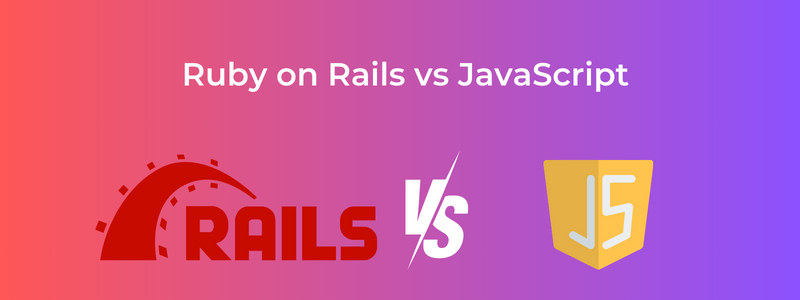Ruby on Rails (RoR) has long been celebrated for its convention-over-configuration philosophy, developer-friendly syntax, and rapid development capabilities. However, beneath the surface, some powerful features often go unnoticed. In this blog, we’ll dive into some hidden Rails features that can elevate your development experience and make your applications even more robust.
What is Ruby on Rails?
Ruby on Rails, commonly known as Rails or RoR, is a full-stack web application framework written in the Ruby programming language. It follows the Model-View-Controller (MVC) architectural pattern, which separates an application into three interconnected components, making development more organized and maintainable.
Here are the key components of Ruby on Rails:
Ruby:
At its core, Ruby on Rails is built on the Ruby programming language. Ruby is known for its elegant syntax, readability, and developer-friendly features. Rails leverages Ruby’s object-oriented nature and dynamic typing to facilitate rapid and clean web application development.
Model-View-Controller (MVC):
- Rails follows the MVC architectural pattern, which divides the application into three main components:
- Model: Represents the data and business logic of the application. It interacts with the database, performs data validation, and encapsulates the business rules.
- View: Handles the presentation and user interface. It displays data to the users and captures user input. Views are often written in a templating language like ERB (Embedded Ruby).
- Controller: Acts as an intermediary between the model and the view. It receives user input, processes requests, interacts with the model to retrieve or update data, and renders the appropriate view.
Convention over Configuration (CoC):
One of the guiding principles of Rails is “Convention over Configuration.” This means that Rails makes assumptions about the best way to structure an application, and developers need to specify only the unconventional aspects. This convention simplifies and speeds up the development process, as developers don’t have to write extensive configuration code.
Don’t Repeat Yourself (DRY):
Another fundamental principle is “Don’t Repeat Yourself.” Rails encourages developers to avoid redundancy in their code by reusing existing components and adhering to the DRY principle. This promotes maintainability and reduces the likelihood of errors.
Active Record:
Active Record is Rails’ object-relational mapping (ORM) system. It simplifies database interactions by abstracting the database layer. Each database table is represented by a Ruby class, and instances of these classes are used to interact with the database. This makes it easy to perform CRUD (Create, Read, Update, Delete) operations on database records.
Gems:
Gems are packages or libraries in the Ruby ecosystem. Rails heavily relies on gems to extend its functionality. Developers can leverage existing gems for tasks such as authentication, image processing, and more. The RubyGems package manager simplifies the process of adding, managing, and updating these gems.
Active Support:
Active Support is a library within Rails that provides additional utility classes and methods to extend the functionality of Ruby. It includes features like date and time handling, string manipulation, and support for other common programming tasks.
Routing:
Rails includes a powerful routing system that maps incoming requests to the appropriate controller action. The routes are defined in a configuration file, making it easy to manage the application’s URL structure.
Powerful Rails Features You Might Not Know
- Database Seeds and Faker Gem:
While many developers are familiar with database seeds, the combination with the Faker gem is a powerful duo. Faker allows you to generate realistic seed data easily. Whether you’re populating a development database or creating test data, incorporating Faker can save time and make your database feel more authentic.
- Counter Cache Columns:
Rails provides a convenient way to cache the count of associated records using counter cache columns. This feature automatically keeps track of the number of associated records, enhancing performance when querying for the count. It’s a powerful tool for optimizing applications with associations.
- Enum Attributes:
Enumerations (enums) provide a way to represent discrete values in a more human-readable form. This is a powerful feature often underutilized. Whether you’re representing states, statuses, or any other set of values, enums can make your code more expressive.
- Concerns for Code Modularity:
Concerns in Rails are an excellent way to organize and modularize your code. They allow you to group related functionalities and include them in your models, controllers, or other parts of your application. This promotes cleaner and more maintainable code.
- Action Text for Rich Text Content:
Introduced in Rails 6, Action Text is a powerful framework for handling rich text content. It seamlessly integrates with the Trix editor and simplifies the storage and rendering of HTML content. This feature is a game-changer for applications that deal with user-generated rich text.
Conclusion
These powerful Rails features might not always make it to the spotlight, but they significantly contribute to the framework’s versatility and ease of use. Incorporating these features into your Rails projects can enhance your development workflow, make your code more expressive, and empower you to build even more dynamic and feature-rich applications. As you continue your Rails journey, exploring these hidden gems can uncover new possibilities and take your development skills to the next level. For further information, you can connect with RailsCarma.
Frequently Asked Questions
Ruby on Rails offers a powerful combination of database seeding and the Faker gem. By integrating Faker, developers can easily generate realistic seed data for their applications, improving the authenticity of their databases during development and testing.
Rails provides a feature called counter cache columns, allowing developers to efficiently cache the count of associated records. This can significantly enhance performance when querying for the count of associated records without the need for additional queries.
Yes, Rails includes a powerful yet underutilized feature called Enum Attributes. Enums provide a convenient way to represent discrete values, making your code more expressive and readable. This feature is particularly useful when dealing with attributes that have a limited set of possible values.
Rails encourages the use of Concerns, a feature that allows developers to organize and modularize their code. Concerns are modules that can be included in models, controllers, or other parts of the application, promoting cleaner and more maintainable code.
Introduced in Rails 6, Action Text is a powerful framework for handling rich text content. It seamlessly integrates with the Trix editor, simplifying the storage and rendering of HTML content. This feature is especially valuable for applications dealing with user-generated rich text, providing a straightforward solution for content management.




